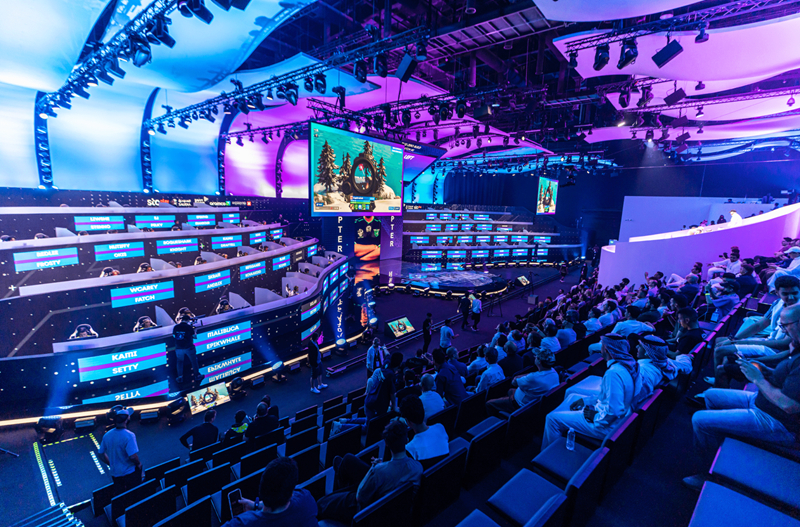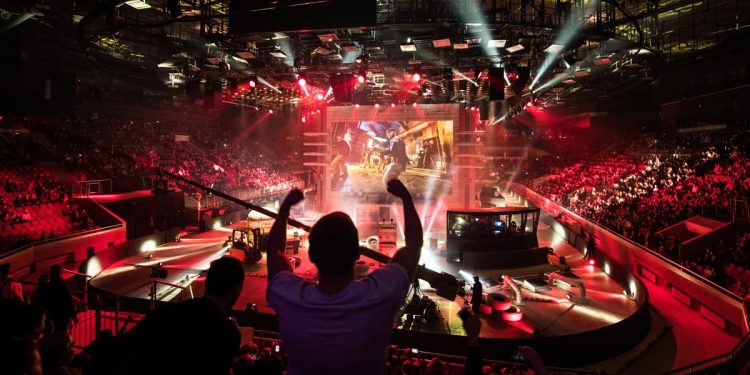Introduction
In the past few decades, the landscape of entertainment has undergone a profound transformation. While traditional sports such as football, basketball, and tennis have long been the dominant form of global entertainment, a new contender has emerged in the form of esports. Esports, or competitive video gaming, has exploded in popularity, with millions of fans tuning in to watch professional gamers battle it out in virtual arenas. Events like the League of Legends World Championship, the Dota 2 International, and the Fortnite World Cup have become major global spectacles, with prize pools reaching into the tens of millions of dollars.
The meteoric rise of esports has led to a burning question: Could esports eventually replace traditional sports as the dominant form of entertainment? This article delves into the factors driving the rise of esports, the appeal of gaming as a competitive and entertainment activity, and whether this industry can sustain its growth in the long term while competing with the deep-rooted traditions of traditional sports.
Chapter 1: The Meteoric Rise of Esports
Esports has evolved from a niche subculture into a global phenomenon in just a few short decades. The transition from casual gaming to organized professional competitions has been nothing short of remarkable.
The Early Days of Esports
Esports has its roots in the 1990s when online multiplayer games such as Quake and StarCraft allowed players to compete against one another on a global scale. The early tournaments, often small-scale and locally organized, began to set the foundation for the larger-scale professional esports leagues and competitions we see today. As the internet became faster and more accessible, and gaming technology improved, the scope and scale of esports tournaments grew, providing gamers with the ability to compete at unprecedented levels.
The Boom of Modern Esports
The turn of the millennium marked the rise of esports as a mainstream phenomenon, especially in countries like South Korea, where games like StarCraft were not only popular but became a staple of national television broadcasts. South Korea’s early investment in esports infrastructure, including dedicated esports arenas and government support for competitive gaming, set a precedent for other countries around the world.
By the 2010s, the esports industry had become a multi-billion-dollar global enterprise, driven by a surge in streaming platforms like Twitch and YouTube Gaming that allowed gamers to broadcast their matches to global audiences. Companies like Riot Games, Blizzard Entertainment, and Valve launched their own franchises and tournaments, drawing massive sponsorship deals and solidifying the legitimacy of esports as a professional sport.
The global reach of esports is undeniable. As of 2023, it was estimated that there were over 500 million esports fans worldwide, a number that continues to grow year after year. High-profile sponsorship deals with brands like Coca-Cola, Intel, and Nike further validate the mainstream appeal of esports.
This chapter will explore the history of esports, from its humble beginnings to its current global status, highlighting the key events, games, and organizations that have fueled its rise to prominence.
Chapter 2: What Makes Esports So Appealing?
For many, the allure of esports goes beyond the games themselves. Esports blends the excitement of traditional sports with the dynamic appeal of video gaming, attracting a diverse audience that spans different age groups, geographies, and interests.
Accessibility and Inclusivity
One of the primary reasons for the rapid rise of esports is its accessibility. Unlike traditional sports, which often require expensive equipment, training, or specialized facilities, esports can be played with just a computer or console. Games like League of Legends, Counter-Strike, and Fortnite are free-to-play, meaning anyone with an internet connection can download and start playing right away.
This accessibility also extends to the audience. Esports broadcasts are free to watch on platforms like Twitch and YouTube, making them easy to access for fans anywhere in the world. Unlike traditional sports, which often require expensive cable subscriptions or tickets to attend live events, esports offers a low-cost or no-cost entry point for viewers.
Digital Natives and the Rise of Streaming
The rise of digital natives—young people who have grown up with the internet and digital media—has played a significant role in the rise of esports. These individuals are already accustomed to online entertainment, social media, and digital content, making the transition to esports as a form of entertainment seamless.
The role of live streaming is also a critical factor in esports’ popularity. Platforms like Twitch, YouTube, and Facebook Gaming allow gamers to stream their gameplay in real-time, offering fans the opportunity to engage with their favorite players and teams live. Streamers also often build personal connections with their followers, leading to a more intimate fan experience than traditional sports broadcasts.
Competitive Nature and Spectator Appeal
Esports is inherently competitive, much like traditional sports. However, the difference lies in the fact that anyone, regardless of physical ability, can become a top player in esports. This opens the door for people from diverse backgrounds, including those who might not have excelled in traditional sports, to achieve professional status in the gaming world.
Furthermore, esports events are often highly spectacular, with flashy production values, live commentary, and intense rivalries that keep fans on the edge of their seats. Major esports events are broadcast in stadiums that can hold tens of thousands of spectators and are often streamed to millions of fans worldwide. Games like League of Legends and Overwatch have earned a reputation for producing high-stakes, dramatic matches, making them just as exciting as any live sporting event.
This chapter will explore the unique appeal of esports, focusing on factors such as accessibility, the role of streaming, the inclusive nature of gaming, and the intense competitive environment that draws players and fans alike.
Chapter 3: Esports and Traditional Sports: A Battle for Mainstream Dominance
As esports continues to grow, a key question arises: Can it eventually surpass traditional sports in terms of audience size, revenue generation, and cultural relevance? While esports has made significant strides, it faces a number of challenges in challenging the deep-rooted dominance of traditional sports.
The Cultural Power of Traditional Sports
Traditional sports have been a cornerstone of human culture for centuries. Whether it’s the Super Bowl in the United States, the FIFA World Cup, or the Olympic Games, these events are ingrained in the fabric of society, and they carry a cultural weight that esports is still working to build. Fans of traditional sports often have a generational connection to their teams and the history behind them, which adds a layer of emotional depth that is difficult to replicate in esports.
Institutional Resistance
Esports still faces challenges in gaining acceptance from traditional sports organizations, broadcasters, and regulatory bodies. While many countries have begun to recognize esports as a legitimate sport, it remains a relatively new concept in the eyes of many, especially older generations. Governmental recognition, tax policies, and professional recognition still lag behind, creating a barrier to the full integration of esports into the mainstream.
The Scale of Investment and Tradition in Sports
Traditional sports are backed by massive financial investments in stadiums, media rights, sponsorships, and merchandise. The infrastructure around traditional sports, from leagues to teams to broadcasting networks, has been built over decades, if not centuries. This makes it difficult for esports to match the same level of investment and cultural significance in a short period of time.
Generational Shifts
One factor that could play a role in esports overtaking traditional sports is the generational shift in how people consume entertainment. Younger audiences, particularly Gen Z and Millennials, are more likely to turn to digital platforms and esports for entertainment, while older generations may still favor traditional sports. As digital natives grow older and continue to shape cultural and media trends, esports could see continued growth at the expense of traditional sports, which may struggle to adapt to rapidly changing technological environments.
This chapter will examine the competition between esports and traditional sports, considering factors like cultural significance, institutional resistance, and the economic scale of traditional sports, and how esports is positioning itself for potential dominance in the entertainment space.

Chapter 4: The Future of Esports – Can It Achieve Mainstream Status?
While the rise of esports has been impressive, questions remain about its long-term viability. Will esports continue to grow at its current pace, or will it plateau in the face of new challenges? The future of esports depends on several key factors:
Innovation and Adaptation
As esports continues to grow, it will need to adapt to technological advancements, fan preferences, and the evolving media landscape. Virtual reality (VR), augmented reality (AR), and other immersive technologies could play a major role in shaping the future of esports, offering fans new ways to engage with events and players. Additionally, esports must continue to innovate in terms of game design and event production to stay relevant and keep fans engaged.
Monetization and Revenue Models
Esports has already become a highly profitable industry, but for it to rival traditional sports in the long term, it will need to develop sustainable revenue models that extend beyond just streaming and sponsorships. This could include new forms of fan engagement, such as in-game purchases, merchandise, and ticket sales for live events. Branding opportunities for esports organizations and players will also need to grow in order to create lasting financial success.
Integration with Traditional Sports
Esports and traditional sports do not necessarily have to be in competition with one another. Many traditional sports leagues, such as the NBA, NFL, and Premier League, have already begun to explore esports ventures, investing in competitive gaming leagues and partnerships. The blending of esports with traditional sports could create new hybrid entertainment experiences, attracting fans from both worlds and fostering a broader fan base.
This chapter will look ahead to the future of esports, considering how the industry can adapt, innovate, and integrate with traditional sports to solidify its position as a dominant form of entertainment.
Conclusion: Can Esports Replace Traditional Sports?
Esports has certainly become a significant force in the entertainment landscape, with its rapid rise showing no signs of slowing down. While it may never entirely replace traditional sports, esports is increasingly carving out its own space as a mainstream form of entertainment, appealing to a new generation of fans. The growth of esports is not just a result of technological advances but also a reflection of changing cultural preferences and a growing demand for digital and interactive forms of entertainment.
The future of esports is bright, but its ability to challenge traditional sports as the dominant form of entertainment will depend on its continued innovation, adaptation, and investment. Whether or not esports overtakes traditional sports, it is clear that both will coexist, shaping the future of global entertainment.


































Discussion about this post